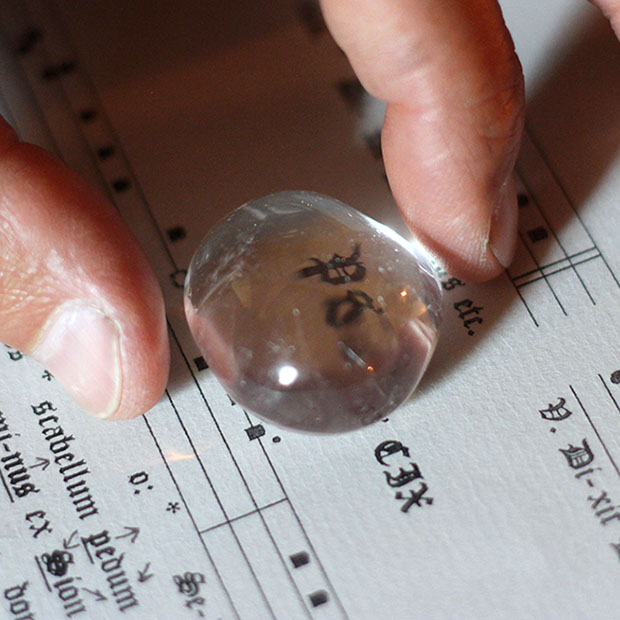Corrective Lenses Through History

Since as early as 60 A.D., people have been using vision-correcting tools to help them see.
Around that time, the Roman philosopher Seneca used a glass globe of water to magnify text, while Emperor Nero needed a magnifying emerald to see gladiator fights. Thanks to millennia of innovations since then, we don’t need to rely on water bowls or jewels, and it’s fascinating to see how we got here!
Centuries of Evolving Corrective Lenses
The monks of 10th century Europe came up with the next big leap forward in technology for helping with vision. They needed to be able to see small details to do their beautiful illuminated calligraphy work, and so they used polished domes of transparent quartz called “reading stones.”
It would be another couple of centuries before it occurred to anyone to fix reading stones on wearable frames for easy use. The identity of the inventor of these early spectacles is unknown, though a Florentinian named Salvino D’armati is often credited for it.
Glasses Working Their Way Down the Class System
When spectacles were first invented, they could only be made out of very expensive materials like crystal, which made them a status symbol for the wealthy and too costly for anyone else. However, with the skyrocketing literacy rates of Europe after the invention of the printing press in 1440, demand for affordable reading glasses increased. They started using glass to make the lenses, which was much cheaper than crystal.
Folding Frames and Prescription Lenses
Glasses still had a long way to go. The frames weren’t like modern ones; they had to perch on the nose or be held with a handle, and glass blowers who made the lenses couldn’t fine-tune them very much for people with different refractive errors. Glasses finally became hands-free in the 1700s when the temples (the portion that extends back past the ear) were added.
We credit Benjamin Franklin with the invention of bifocals, and that was also when hinges were introduced so that glasses could be folded and stored more compactly. Eye doctors were getting better all the time at tailoring lenses to patients’ individual needs, including cylindrical lenses to correct astigmatism in the early 1800s, and finally, in 1862, Dutch eye doctor Herman Snellen invented the “big E” chart, standardizing vision correction.
Glasses Today
We’re so fortunate to be able to get glasses (or contact lenses) that exactly address our vision problems, and we can also choose from a range of materials and coatings and a variety of shapes and colors to suit our style. Modern optometrists stand on the shoulders of giants! If you’re looking for a new pair of glasses or need an updated prescription, we’re happy to help.

